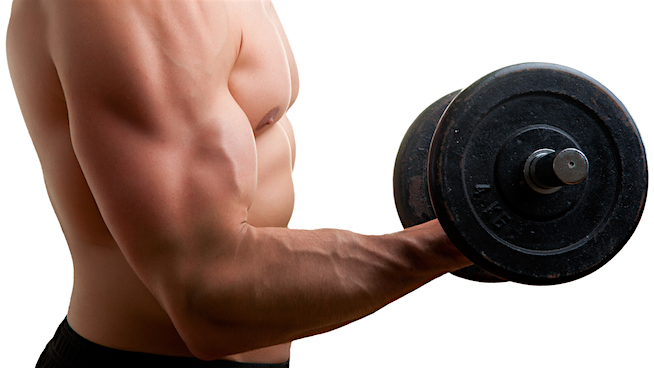A Sagittal plane is a hypothetical plane in which a vertical line transects the human body into left and right parts. It helps elaborate on the location of the structure. Besides, you can also tell the direction of the movement of the body during a workout. This knowledge is valuable in describing the several exercises that include the sagittal movement of the body parts. The plane is one of the three planes used to describe the directions and the activities of the human body. The other two are; coronal and transverse planes. This post elaborates on planes of motion and exercises related to it.
Table of Contents
Derivation Of The Term
The derivation of the term sagittal is credited to the Latin word sagitta, which means arrow. It is aptly used to describe the line that pierces the body into two parts. The use of the term is entirely appropriate, which determines their characteristic of creating a vertical parabolic trajectory. It is one of the three planes that devices the body in left and right.

Sagittal Plane is also referred to as the median plane when it bisects the body symmetrically in two halves. In this condition, the plane passes precisely from the middle of the body, intersecting the mid-body parts; navel or spine, for instance.
Different Planes
To understand the sagittal plane, it is essential to describe the other two planes: Frontal and Transverse. These planes are used to find out the exact position and the movement of the body. Check the below-given list to understand these planes:
1: Sagittal Plane
This plane is a vertical plane that divides the human body symmetrically into left and right sides. The movement on this plane tends to be forwards and backward. Examples may include walking, running, and more similar motion.
2: Frontal Plane
A frontal plane is also a vertical plane, which symmetrically divided the body. However, as the name suggests, it intersects the body in front and back halves. To depict the movement of this place, you may take the reference of the cartwheels and star jumps.
3: Transverse Plane
The last plane is the transverse plane, which bisects that body into two parts. This is a horizontal plane, so the divisions will be apparently into the upper and lower halves. Ice skating spin can be the most suitable movement that can be taken as a reference for this movement.
Purpose Of These Planes Of Movement
The planes of movement discussed in the above-given section are very helpful in the identification of a few essential things. Every exercise you do can be connected to these planes of motion. They are the same as the geometrical coordinates having three different axes. Besides, all of them lie on one plane more than the other two. When you have the divisions based on these planes, such as front-back, left-right, top-bottom, then you can determine the plane of an exercise with the utmost ease.
How To Determine The Plane Of A Workout?
If you want to determine the plane of a workout, then you have to look after the movement of the body. Check if it is predominantly moving in one place as compared to the others. You can understand it better in 3D when you can see through the body motion of the body and which plane has the most of it. Following this procedure carefully, you can get to know about the plane with absolute ease.
Sagittal Plane Exercises
Now that you know the meaning of the movement planes, below are some exercises related to the sagittal one. Check them out!

1: Back Squat
The back squat is a lower-body exercise that targets glutes, hamstrings, and quadriceps. Because of its capacity to increase strength, power, and size, it’s often referred to as “the king of all workouts.” When performed incorrectly, the Back Squat can be extremely risky and increase your risk of knee or back damage. It’s a safe workout that will surely make you a better athlete if done right.
The traditional squat stance is to stand with your feet shoulder-width apart and your feet at a modest outward inclination. This approach may work for a lot of people, but it ignores the fact that everyone’s anatomy is different. Your proper squat stance should ultimately be determined by the shape of your hips. Some of you may prefer to squat with a wide stance, but this may create discomfort for your training partner and vice versa.

2: Bicep Curl
The biceps curl is a well-known weight-training exercise that targets the upper arm and, to a lesser extent, the lower arm muscles. It’s a fantastic exercise for gaining strength and definition. This exercise can be done with dumbbells, kettlebells barbells, resistance bands, or cable machines, among other things. Begin by performing a standing alternating dumbbell biceps curl, which can be done anywhere. Curls are a common strength-training exercise for the upper body.
Curls work the biceps muscles at the front of the upper arm, as well as the brachialis and brachioradialis muscles in the lower arm. These muscles are used every time you pick anything up, which frequently happens in everyday life.

3: Running or Jogging
A popular form of physical activity is jogging or running. At some point in their lives, one out of every five Australians will try running (or jogging). Running is a popular workout since it is inexpensive and can be done at any time that is convenient for you. Running and jogging differ in terms of intensity.
Compared to jogging, running is faster, utilizes more kilojoules, and requires more work from the heart, lungs, and muscles. When compared to jogging, running requires a higher level of general fitness. Running and jogging are both aerobic activities. The phrase ‘aerobic exercise‘ refers to any physical activity that produces energy by mixing oxygen with blood glucose or body fat.

Final Words!
This post provides intelligible information on the sagittal plane with reference to the other planes of the movement. Besides, it also elaborates on the exercises related to it. If you love to read more topics on health and workouts, make a visit to our blog section.

